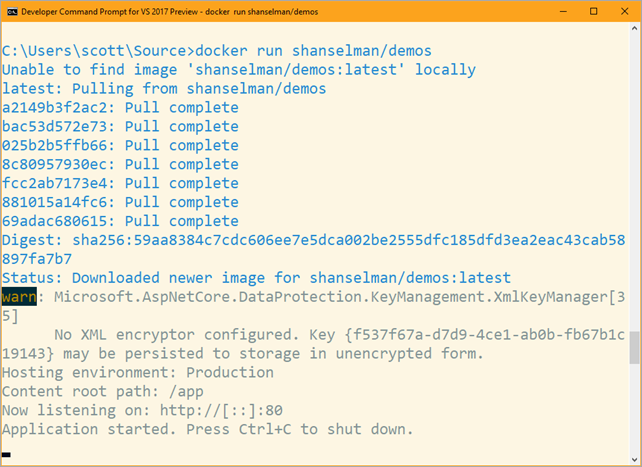Estimated reading time: 4 minutes
Docker Desktop is an application for MacOS and Windows machines for the building and sharing of containerized applications and microservices. Docker Desktop delivers the speed, choice and security you need for designing and delivering containerized applications on your desktop. Does docker windows containers, with Docker Desktop for Windows, have default memory limit? I have an application that was crashing when I run it in the container, but when I tried to specify -memory 2048mb parameter to the docker run command it seems to run fine. At least in the scenario where it was crashing before.
Docker Desktop provides several networking features to make it easier touse.
Features
VPN Passthrough
Docker Desktop networking can work when attached to a VPN. To do this,Docker Desktop intercepts traffic from the containers and injects it intoWindows as if it originated from the Docker application.
Port Mapping

When you run a container with the -p argument, for example:
Docker Desktop makes whatever is running on port 80 in the container (inthis case, nginx) available on port 80 of localhost. In this example, thehost and container ports are the same. What if you need to specify a differenthost port? If, for example, you already have something running on port 80 ofyour host machine, you can connect the container to a different port:
Now, connections to localhost:8000 are sent to port 80 in the container. Thesyntax for -p is HOST_PORT:CLIENT_PORT.

HTTP/HTTPS Proxy Support
See Proxies.
Known limitations, use cases, and workarounds

Following is a summary of current limitations on the Docker Desktop for Windowsnetworking stack, along with some ideas for workarounds.
There is no docker0 bridge on Windows
Because of the way networking is implemented in Docker Desktop for Windows, you cannotsee a docker0 interface on the host. This interface is actually within thevirtual machine.
I cannot ping my containers
Docker Desktop for Windows can't route traffic to Linux containers. However, you canping the Windows containers.
Per-container IP addressing is not possible
The docker (Linux) bridge network is not reachable from the Windows host.However, it works with Windows containers.
Use cases and workarounds
There are two scenarios that the above limitations affect:
I want to connect from a container to a service on the host
Run Docker Linux Container On Windows Server 2016
The host has a changing IP address (or none if you have no network access). We recommend that you connect to the special DNS namehost.docker.internal which resolves to the internal IP address used by thehost. This is for development purpose and will not work in a production environment outside of Docker Desktop for Windows.
Docker Start Linux Container On Windows
You can also reach the gateway using gateway.docker.internal.
If you have installed Python on your machine, use the following instructions as an example to connect from a container to a service on the host:
Run the following command to start a simple HTTP server on port 8000.
python -m http.server 8000If you have installed Python 2.x, run
python -m SimpleHTTPServer 8000.Now, run a container, install
curl, and try to connect to the host using the following commands:
I want to connect to a container from Windows

Port forwarding works for localhost; --publish, -p, or -P all work.Ports exposed from Linux are forwarded to the host.
Our current recommendation is to publish a port, or to connect from anothercontainer. This is what you need to do even on Linux if the container is on anoverlay network, not a bridge network, as these are not routed.
The command to run the nginx webserver shown in Getting Startedis an example of this.
To clarify the syntax, the following two commands both publish container's port 80 to host's port 8000:

When you run a container with the -p argument, for example:
Docker Desktop makes whatever is running on port 80 in the container (inthis case, nginx) available on port 80 of localhost. In this example, thehost and container ports are the same. What if you need to specify a differenthost port? If, for example, you already have something running on port 80 ofyour host machine, you can connect the container to a different port:
Now, connections to localhost:8000 are sent to port 80 in the container. Thesyntax for -p is HOST_PORT:CLIENT_PORT.
HTTP/HTTPS Proxy Support
See Proxies.
Known limitations, use cases, and workarounds
Following is a summary of current limitations on the Docker Desktop for Windowsnetworking stack, along with some ideas for workarounds.
There is no docker0 bridge on Windows
Because of the way networking is implemented in Docker Desktop for Windows, you cannotsee a docker0 interface on the host. This interface is actually within thevirtual machine.
I cannot ping my containers
Docker Desktop for Windows can't route traffic to Linux containers. However, you canping the Windows containers.
Per-container IP addressing is not possible
The docker (Linux) bridge network is not reachable from the Windows host.However, it works with Windows containers.
Use cases and workarounds
There are two scenarios that the above limitations affect:
I want to connect from a container to a service on the host
Run Docker Linux Container On Windows Server 2016
The host has a changing IP address (or none if you have no network access). We recommend that you connect to the special DNS namehost.docker.internal which resolves to the internal IP address used by thehost. This is for development purpose and will not work in a production environment outside of Docker Desktop for Windows.
Docker Start Linux Container On Windows
You can also reach the gateway using gateway.docker.internal.
If you have installed Python on your machine, use the following instructions as an example to connect from a container to a service on the host:
Run the following command to start a simple HTTP server on port 8000.
python -m http.server 8000If you have installed Python 2.x, run
python -m SimpleHTTPServer 8000.Now, run a container, install
curl, and try to connect to the host using the following commands:
I want to connect to a container from Windows
Port forwarding works for localhost; --publish, -p, or -P all work.Ports exposed from Linux are forwarded to the host.
Our current recommendation is to publish a port, or to connect from anothercontainer. This is what you need to do even on Linux if the container is on anoverlay network, not a bridge network, as these are not routed.
The command to run the nginx webserver shown in Getting Startedis an example of this.
To clarify the syntax, the following two commands both publish container's port 80 to host's port 8000:
To publish all ports, use the -P flag. For example, the following commandstarts a container (in detached mode) and the -P flag publishes all exposed ports of thecontainer to random ports on the host.
See the run command for more details onpublish options used with docker run.
